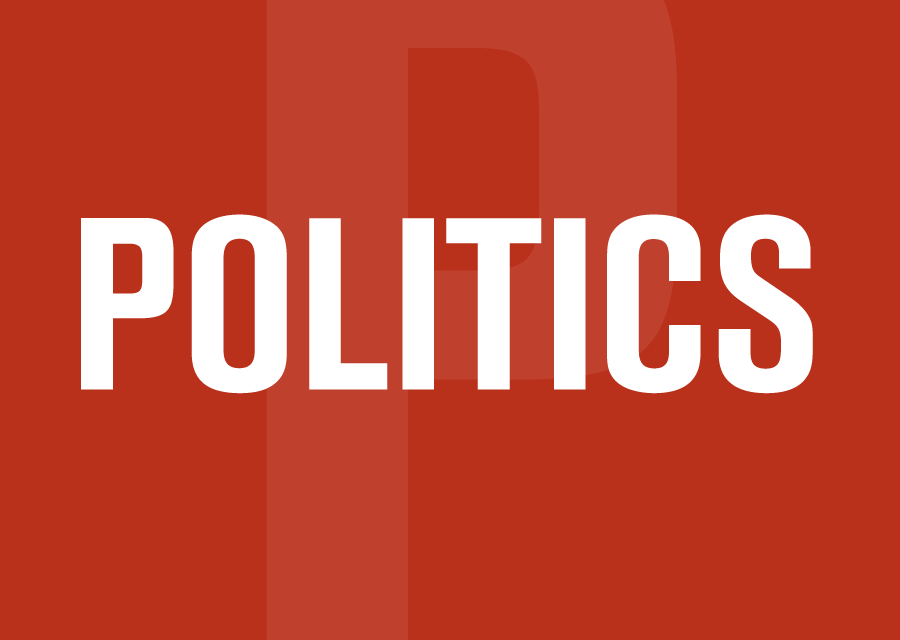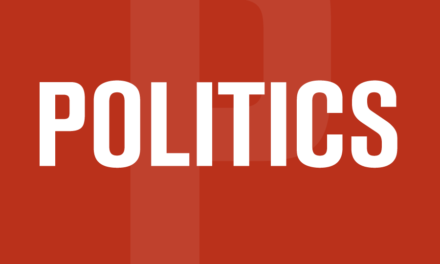I had to laugh last week when politicians started nattering about a “grand bargain” involving oil pipelines and carbon emissions. The source of the chatter was the meeting in Saskatoon between Mark Carney and the premiers, called so provincial and territorial leaders could pitch pet projects they believe Ottawa should support to fight off Trump with infrastructure.
One such project, a longstanding political hot potato, is another pipeline to tidewater so that producers in the Alberta oil sands can try to get into overseas markets, presumably reducing reliance on sales to Trump’s USA. So when the Prime Minister expressed support for a pipeline to export “decarbonized” barrels of oil to Asia, Danielle Smith was hot to trot. With no sign she was conscious of the irony, the separatist-coddling Alberta Premier emerged from the meeting to declare the beginnings of a grand bargain with the federal government – the feds clear the way for a pipeline to the sea and Alberta will support cleaning up its emissions from the oil sands.
As readers of this commentary will recall, there was an earlier grand bargain between the feds and Alberta on pipelines and emissions. A decade ago Justin Trudeau’s government agreed to support a pipeline to tidewater, in return for which Rachel Notley’s Alberta government would put a price on carbon and an emissions cap on the oil sands. Trudeau kept his word, shelling out $34 billion to expand the TransMountain pipeline. But the UPC government that replaced Notley’s NDP in 2019 didn’t keep up Alberta’s end, mounting incessant political attacks on consumer carbon pricing, emission caps and more stringent environmental impact assessments – all while demanding more pipelines.
Whether from short-term memory loss or the spirit of national reconciliation, Carney refrained from scoffing in Smith’s direction and instead adopted her grand bargain characterization. His hand-picked Energy Minister Tim Hodgson has even used the slogan in question period in the House of Commons to ward off Conservative caterwauling about how badly the Liberals have treated Alberta’s oil and gas industry.
Carney has not been publicly specific about where a pipeline might go or how you go about “decarbonizing” a barrel of oil. But in Smith’s view, the bargain involves a pipeline to the northern British Columbia coast and GhG emission reductions through carbon capture and storage of emissions from oil sands production, an expensive and unproven process.
Deja Vu?
Aside from the obvious caveat that it’s nuts to be talking about pipelines and increased oil production while the forests of Canada burn, there are other factors standing in the way of the grand bargain’s consummation. The British Columbia government and First Nations opposed a previous effort to build the Northern Gateway pipeline to the B.C. north coast. The current government hasn’t given a firm “no” as yet, pointing out that there is no actual project to consider. But the initial response was far from positive, and whatever B.C.’s NDP government finally decides we can expect opposition to the pipeline from environmentalists and at least some First Nations.
The carbon capture part will also be hard to pull off, even if the technology can be made to work. Pathways Alliance, a group of six major oil sands producers, have been talking since 2021 about a plan to reroute carbon emissions from oil sands facilities to an underground hub in northeastern Alberta. Although the feds have offered billions in tax credits to subsidize such carbon capture, the major oil sands producers say that’s not enough to get them to invest their own money. But coming on top of the public money invested in the TransMountain pipeline any increase in federal subsidy to the oil sands big six producers looks politically fraught.
So given these complications, it’s likely the positive vibes between Smith and the feds seen at last week’s meeting will fade. We may well be in for another episode in the national melodrama over pipelines and emissions that first aired almost two decades ago – with threats of Alberta separatism an added plot line. But ironically, one thing that could spare us from that fate is the absence of any sign of private sector interest in building a pipeline, a deficiency that may have more to do with market conditions than with politics or environmental concerns.
What Markets?
The current discussion seems to assume that if Canada can lower emissions from its oil production and increase export capacity with more pipelines there will be a ready market for our oil, mostly in Asia. However, that premise – and Alberta’s bargaining power – needs to be questioned on several grounds.
For one thing, outlook for future oil prices is not particularly upbeat. The gold rush mentality that led to the rapid oil sands development and the push for pipelines was the result of buoyant prices that went as high as $147 a barrel in 2008. The benchmark price this year and next is expected to less than half of that, about $60 U.S. per barrel. That’s according to the international Energy Agency (IEA) which is also projecting that the world will be awash in oil by 2030, with supply capacity exceeding demand by eight billion barrels a day (mb/d).
Projecting oil prices into the future is a mug’s game, depending on factors such as economic conditions, supply trends, politics, wars and natural disasters. However, according to the U.S. Energy Information Agency prices could reach only $87 a barrel by 2050, nowhere near the 2008 peak that contributed to the oil sands frenzy 20 years ago and the clamouring for pipelines that followed.
Future prices are influenced by demand, and as has been widely reported, the International Energy Agency projects that by 2030 global oil demand will peak at around 105.4mb/d, and plummet to just 57 million barrels daily by 2050. This sharp drop, mainly due to renewables and electrification, is very bad news for Canada and other oil producing nations. So naturally there have been great howls of alarm at such projections of decline, most notably from the Saudi-dominated Organization of Petroleum Exporting Countries (OPEC).
OPEC no help
OPEC says oil demand will keep going up over the next 25 years, finally peaking at 120 mb/d in 2050 – more than twice the IEA’s estimate. OPEC’s bullish projection received prime time exposure this week from the organization’s secretary-general, Haitham al-Ghais, who received a special invitation from Danielle Smith to address the Global Energy Show in Calgary. His main message: the IEA has it wrong.
Smith will no doubt use OPEC’s take on things to push back against IEA and the likes of Goldman-Sachs, which is predicting a demand peak in 2034. However, detailed estimates released earlier by OPEC don’t significantly strengthen the case for a pipeline to take Alberta oil to the world.
OPEC projects that the main growth in demand – about 1.5 percent a year – will occur from 2023 to 2030, increasing from 102.2 to 113.3 mb/d. Between 2030 and 2050 annual growth will average only 0.3 per cent, according to OPEC projections. Assuming any new Canadian pipeline would not be operating much before 2030, product from the oil sands would therefore be competing for customers in a market that even OPEC admits will be basically stagnant.
The Alberta Premier talks about selling one million barrels a day through a new pipeline “for 20 or 30 years,” but based on the OPEC growth estimates, average demand over the 20 years from 2030 to 2050 will increase by less than 400,000 barrels a day. That would mean that to make the pipeline worth doing, Alberta’s relatively high-cost oil would need to capture the entire increase in world demand while taking 600,000 barrels in sales from the competition. How likely is that?
Danielle Smith insisted in an interview with CTV’s Vassy Kapelos this week that “we know that the world wants our product.” But given current oil market projections even the most ardent supporters of a pipeline shouldn’t be taking that claim on faith. “We know that the world wants our product” isn’t a business plan. It wouldn’t get you a bank loan to set up a hot dog stand – nor should such wishful thinking be taken seriously as any part of a “grand bargain.”
-30-





Xcellent as usual, Richard, with really good information that us non-newsjunkies get nowhere else in such a digested form. Thank you!
Good research behind this comment! A couple of other questions come to mind. Just exactly what leverage could a separate Alberta exercise in its bid to get more oil to world markets. The US has still to approve the connection to the Keystone Pipeline that would take Alberta oil to eastern US refineries. Separation would not enhance the willingness of BC to accept a pipeline to a northern-coast port. And it will take another dozen or so years for climate change to ensure 12-months-a-year passage for tankers out of Hudson’s Bay. Danielle Smith is dancing for a home audience.
A well-researched comment. Another point: Exactly what leverage would a separate Alberta have to get more pipelines to tidewater. The Keystone connection to eastern refineries is still not complete. And how many years will it take climate change to ensure 12-month-a-year passage for oil tankers through Hudson’s Bay?
Canadians just spent $34 billion on a pipeline to Vancouver. All other issues aside, why would a second pipeline need to run to BC’s northern coast? Couldn’t we double up on the one we have?
Good point and a question that should be examined by media. In the meantime the guy who runs TransMountain indicates that capacity on existing pipeline can be increased which, given projections for peak oil, should be enough to keep the oil sands production at slightly increased levels over the next few years. But some people have a different view of the future and the political mandate to promote it.